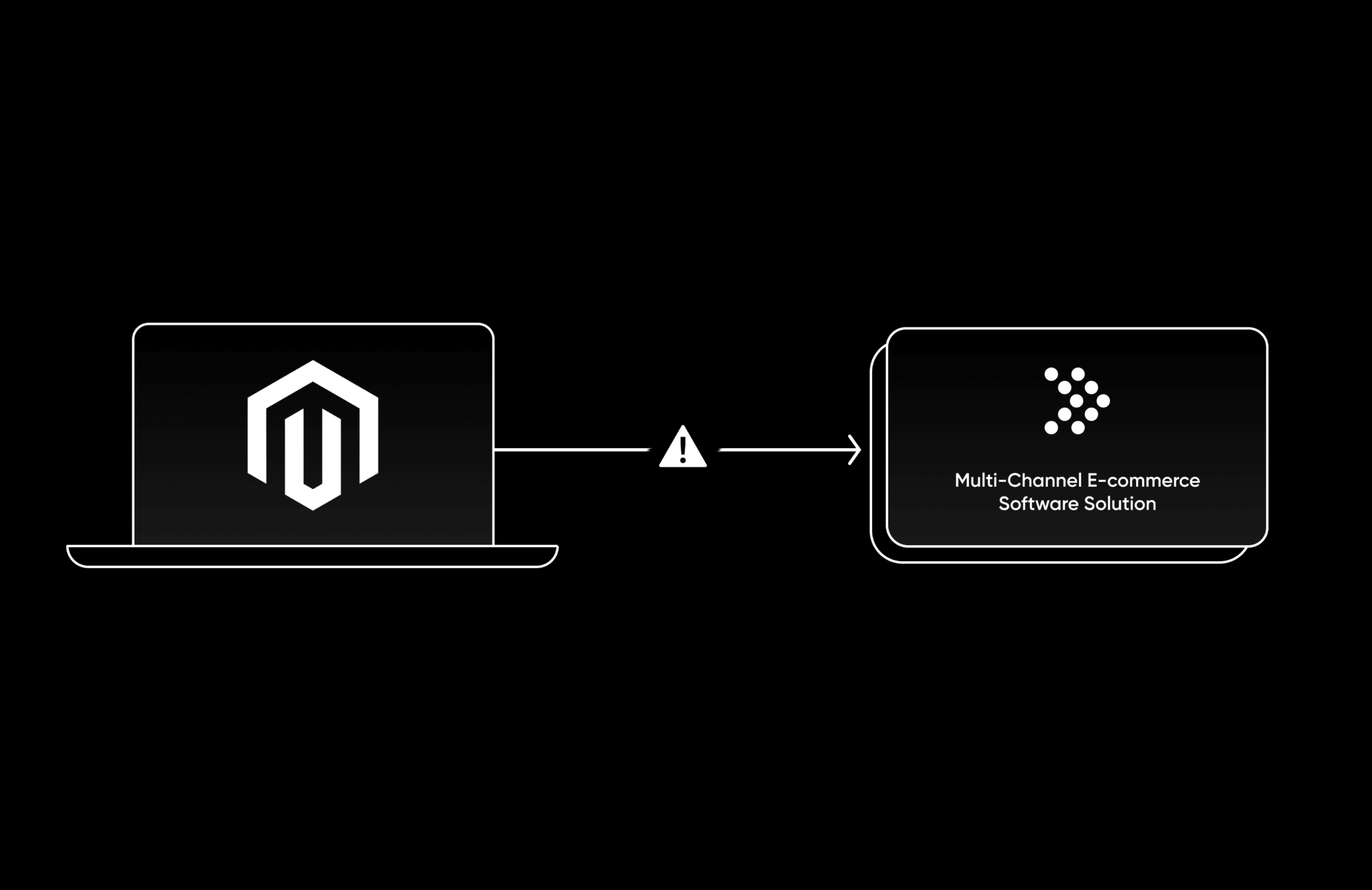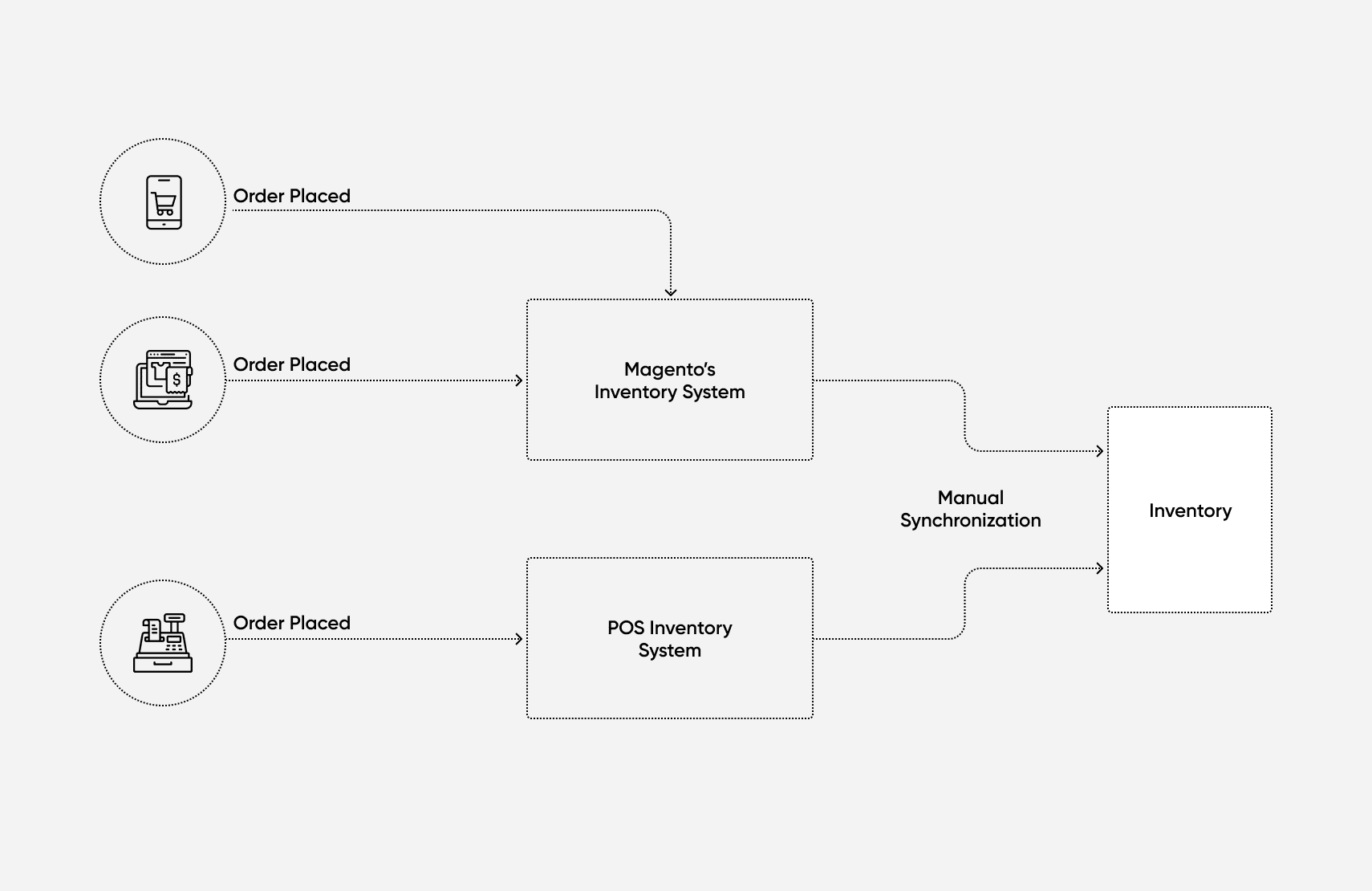Hacking Magento Order Management for Multichannel E-Commerce

Multichannel e-commerce is part of almost every business now, and you need to be able to manage it properly.
Your system should be optimized to ensure the same workflow is being applied to all orders, your data is being handled accurately, and no issues arise that require human intervention.
If you’re having difficulty, though, consider a headless commerce solution.
fabric OMS ensures that you can fulfill orders coming from any channel and fully manage your e-commerce workflow from one place.
When you own a business that operates both offline and online, and on different platforms such as a website and a mobile app, you’ll eventually run into some issues. How do you manage orders coming from different places? How do you prevent overlap in inventory? How do you ensure all orders will be handled the same way, even if they’re coming from different places?
This is the point of multichannel e-commerce, or selling products in multiple places such as in-store, on a website, and on mobile apps. If done correctly, multichannel e-commerce can help grow your sales, because it caters to customers with different shopping preferences while also maintaining the same internal workflow for all incoming orders.
In this article, you’ll learn about multichannel e-commerce and why you need it. You’ll also learn how to handle order management in multichannel e-commerce using the Magento order management system, and what might be a better alternative.
[toc-embed headline=”Why Multichannel E-Commerce”]
Why Multichannel E-Commerce
If you look at sales statistics, you’ll see that product sales don’t happen in just one place. In 2021, 18.1 percent of retail sales worldwide were expected to be e-commerce sales. Also, 45 percent of e-commerce sales in the United States come from mobile devices. Most online shoppers are between the ages of twenty-five and thirty-four, whereas other age groups prefer shopping in-store.
This means that to cater to different age groups or customer preferences, your business should be able to at least sell online and offline. You should consider online channels for your business such as websites, mobile apps, or even social media platforms that integrate e-commerce capabilities. You can process orders and manage inventory from a central dashboard or platform.
[toc-embed headline=”Multichannel E-Commerce in Magento”]
Multichannel E-Commerce in Magento
Magento is one of the most popular e-commerce platforms, with over 250,000 websites using it. Magento has a lot of out-of-the-box features that make it attractive for many businesses.
However, the Magento order management system doesn’t come with support for multichannel e-commerce. It does offer an inventory management solution, but it doesn’t have a built-in method to connect it to other inventory management software that your business might be using. For example, if you sell both online and offline, and you have a point of sale (POS) to manage your products and inventories, there might be inaccuracies between online and offline channels. You need to ensure that when an item is purchased offline, it reflects on the online inventory and vice versa.
Furthermore, Magento’s order management system will only show orders placed within Magento’s realm. Any orders outside Magento order management won’t appear on its dashboard, and you won’t be able to manage them within the same workflow. If you don’t have a centralized platform to manage your orders, it can cause problems when fulfilling orders or when resolving issues that arise with orders. Human intervention might be needed to manually resolve issues, raising the risk of errors.
Even if you overcome all these issues, you still don’t have any single source of truth for your data. If a channel reflects incorrect data, you can’t be sure where the mistake is coming from. You might need to manually correct it, which means extra costs and work as well as the possibility of human error.
Hacking Multichannel E-Commerce in Magento
These issues aren’t impossible to solve, especially for a platform as big as Magento.
One common solution is finding an extension that optimizes the platform for multichannel e-commerce. There are extensions that provide support and integration for Magento, or channel-specific extensions like the eBay integration extension. Using extensions saves you time on creating your own solution.
However, using extensions comes with some issues. Magento is a complex order management system, and some extensions are developed with little experience or knowledge of development in Magento. They may break with the release of new updates, especially if they’re not continuously maintained. Any major updates from Magento or other channels the extension connect to can cause problems in the extension, ultimately causing problems in your platform.
Another solution is centralizing your data coming from different channels into spreadsheets using Zapier. This tool lets you automate the connection between different apps or platforms. Zapier offers several integration solutions for Magento, including connecting it to a Google Spreadsheet. You can apply this same integration to other channels. You can also use Zapier’s integration solutions for eBay to connect to the same Google Spreadsheet. This lets you connect any popular channel and platform into spreadsheets using Zapier, which will centralize the data.
This solution has problems as well, though. It’s dependent on a tool like Zapier, meaning the tool becomes an integral part of your e-commerce platform instead of optional. The data is traveling from many places to arrive at the centralized spreadsheet, then undergoing structural changes to fit into the spreadsheet. Much can go wrong with the data while it moves around and is reshaped. Additionally, if one of your channels is custom-made or isn’t supported by Zapier, you’ll have to create your own integration.
A third solution would be to implement the integrations with all your channels in-house. You can either use other channels’ APIs in a custom Magento module to create an integration between the two channels, or you can connect your other channels into Magento using Magento’s REST APIs. Magento provides REST APIs that let you interact with it both as a user and as an admin. This allows you to customize your setup, ensuring that all channels are integrated appropriately.
The challenge of this solution is finding experienced Magento developers to ensure that your integration is done right. Magento is a complex order management system that is hard to learn, so finding developers can be difficult and costly. It can also be difficult to continuously maintain the integration through updates in Magento or in other channels.
[toc-embed headline=”Better Solution for Multichannel E-Commerce”]
Better Solution for Multichannel E-Commerce
Keep in mind that multichannel e-commerce primarily means selling products in different places. Each place you sell your product is an independent component of your e-commerce ecosystem that should use the same data but shouldn’t necessarily affect other components or integrate directly into them.
In traditional e-commerce order management software like Magento, any integration added within the system makes the system dependent on that integration. Because of Magento’s monolithic nature, integration can easily break the system.
The solution is headless commerce. This means using a set of microservices that together create a seamless e-commerce workflow, without any individual service depending on or affecting another.
When you use headless commerce, your different channels only need to connect to your data’s single source of truth. They don’t need to interact on a higher level, and they don’t depend on each other or on a third-party service to connect them. Your dashboard displays and handles your single source of truth, regardless of where the data came from.
This solution resolves the problems of using third-party extensions. It removes the risks of one service breaking other services and ensures that all channels are using the same data. Finally, it reduces your costs for external solutions and for developers, because separate services are less complex, and it’s easier to find developers to handle them.

Tech advocate and writer @ fabric.
